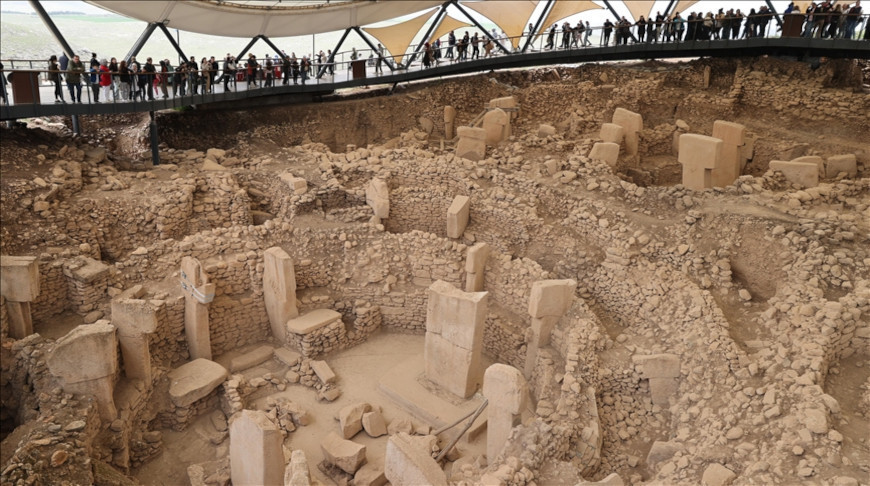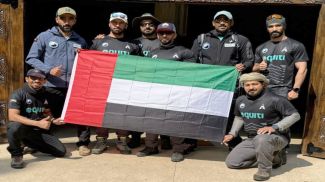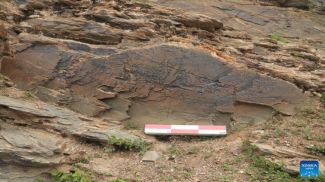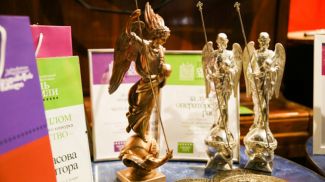
ROME/ISTANBUL, 23 April (BelTA - Anadolu) - Turkish Culture and Tourism
Minister Mehmet Nuri Ersoy said the Gobeklitepe exhibition at Rome’s
Colosseum has drawn more than 6 million visitors, underscoring the
ancient site as one of Türkiye’s key cultural assets that should be
promoted as a global brand.
Gobeklitepe, regarded as the world’s oldest temple, has been on UNESCO’s World Heritage Tentative List since 2011. It was first identified in 1963, when researchers from the universities of Istanbul and Chicago began excavations at the site situated near the town of Sanliurfa in southeastern Türkiye.
Ersoy expressed his satisfaction with the success of the exhibition Gobeklitepe, The Enigma of a Sacred Place, which opened on October 24 and will close next week, during an interview with Anadolu.
Over the last six months, we have received over 6 million visitors. We'll probably hit 6.4 million visitors (until the end of the exhibition next week), he said.
Ersoy emphasized the importance of showcasing the site in one of Europe’s most iconic landmarks.
“Gobeklitepe being presented at the Colosseum has a huge advantage. This is one of the top spots in Europe for tourists interested in history and culture,” he said. “These visitors come willingly, paying an (entrance) fee to be there. From this perspective, it’s a highly valuable target location for us—one of the most ideal spots for a target-oriented branding effort.”
He said the exhibit also contributed to increasing tourism from Italy, which he called one of Türkiye’s key source markets. “In 2022, we received 420,000 visitors from Italy. That number increased to 600,000 in 2023. Last year, it rose to 720,000. This year, after the Gobeklitepe exhibition, we are seeing a very serious increase. It looks like we will probably exceed 900,000 this year.”
The minister responded to the question of whether hosting such an exhibition at a world-renowned symbolic monument serves as an important form of publicity, saying: "Of course, we're not doing this just for publicity. We're also doing it as part of our branding (strategy)."
Türkiye has products like Ephesus, Hierapolis, and Gobeklitepe, which “distinguish us from the rest of the world,” he said. “(For instance), when you look at England, Stonehenge is considered the oldest, but it’s 2,500 years old. We're talking about a settlement (Gobeklitepe) that’s 12,000 years old. (Gobeklitepe), in fact, is one of the products that must be branded.”
- Focus on repatriation of artifacts
On the country’s ongoing efforts to reclaim smuggled artifacts, he highlighted “This is one of our top priorities,” noting that Türkiye has restructured its operations to fight trafficking more effectively.
The ministry has elevated its anti-smuggling unit to a department-level office and increased the number of high-ranking experts in the field, he noted, adding that it allows them to engage with international counterparts on equal footing.
Ersoy praised the work of his teams, referring to them as “our Sherlock Holmeses” for their role in tracking down stolen cultural property and deterring future illicit trade.
“We’ve achieved such a great success that collectors no longer want to buy a treasure or cultural artifact of Anatolian origin that has been taken abroad without permission. The key is to break this interest. In other words, you significantly reduce the value of the items held by treasure hunters or illegal excavators.”
Ersoy emphasized that awareness has been raised in relevant circles, saying: "All collectors and museums now know that if they acquire a cultural artifact illegally removed from Anatolia and display it, Türkiye’s Ministry of Culture and Tourism will detect it, take action, and initiate a comprehensive legal process—eventually reclaiming it. In other words, it will be brought back to Anatolia. We've worked hard to build this reputation—and we've succeeded."
Gobeklitepe, regarded as the world’s oldest temple, has been on UNESCO’s World Heritage Tentative List since 2011. It was first identified in 1963, when researchers from the universities of Istanbul and Chicago began excavations at the site situated near the town of Sanliurfa in southeastern Türkiye.
Ersoy expressed his satisfaction with the success of the exhibition Gobeklitepe, The Enigma of a Sacred Place, which opened on October 24 and will close next week, during an interview with Anadolu.
Over the last six months, we have received over 6 million visitors. We'll probably hit 6.4 million visitors (until the end of the exhibition next week), he said.
Ersoy emphasized the importance of showcasing the site in one of Europe’s most iconic landmarks.
“Gobeklitepe being presented at the Colosseum has a huge advantage. This is one of the top spots in Europe for tourists interested in history and culture,” he said. “These visitors come willingly, paying an (entrance) fee to be there. From this perspective, it’s a highly valuable target location for us—one of the most ideal spots for a target-oriented branding effort.”
He said the exhibit also contributed to increasing tourism from Italy, which he called one of Türkiye’s key source markets. “In 2022, we received 420,000 visitors from Italy. That number increased to 600,000 in 2023. Last year, it rose to 720,000. This year, after the Gobeklitepe exhibition, we are seeing a very serious increase. It looks like we will probably exceed 900,000 this year.”
The minister responded to the question of whether hosting such an exhibition at a world-renowned symbolic monument serves as an important form of publicity, saying: "Of course, we're not doing this just for publicity. We're also doing it as part of our branding (strategy)."
Türkiye has products like Ephesus, Hierapolis, and Gobeklitepe, which “distinguish us from the rest of the world,” he said. “(For instance), when you look at England, Stonehenge is considered the oldest, but it’s 2,500 years old. We're talking about a settlement (Gobeklitepe) that’s 12,000 years old. (Gobeklitepe), in fact, is one of the products that must be branded.”
- Focus on repatriation of artifacts
On the country’s ongoing efforts to reclaim smuggled artifacts, he highlighted “This is one of our top priorities,” noting that Türkiye has restructured its operations to fight trafficking more effectively.
The ministry has elevated its anti-smuggling unit to a department-level office and increased the number of high-ranking experts in the field, he noted, adding that it allows them to engage with international counterparts on equal footing.
Ersoy praised the work of his teams, referring to them as “our Sherlock Holmeses” for their role in tracking down stolen cultural property and deterring future illicit trade.
“We’ve achieved such a great success that collectors no longer want to buy a treasure or cultural artifact of Anatolian origin that has been taken abroad without permission. The key is to break this interest. In other words, you significantly reduce the value of the items held by treasure hunters or illegal excavators.”
Ersoy emphasized that awareness has been raised in relevant circles, saying: "All collectors and museums now know that if they acquire a cultural artifact illegally removed from Anatolia and display it, Türkiye’s Ministry of Culture and Tourism will detect it, take action, and initiate a comprehensive legal process—eventually reclaiming it. In other words, it will be brought back to Anatolia. We've worked hard to build this reputation—and we've succeeded."













